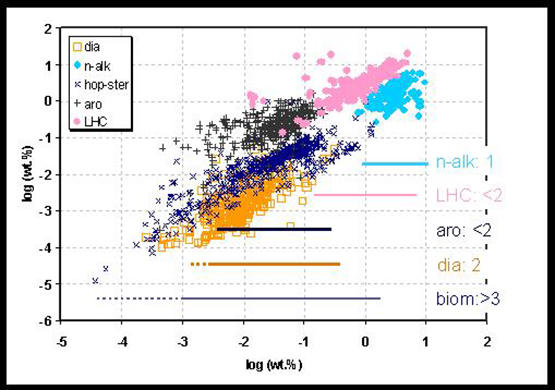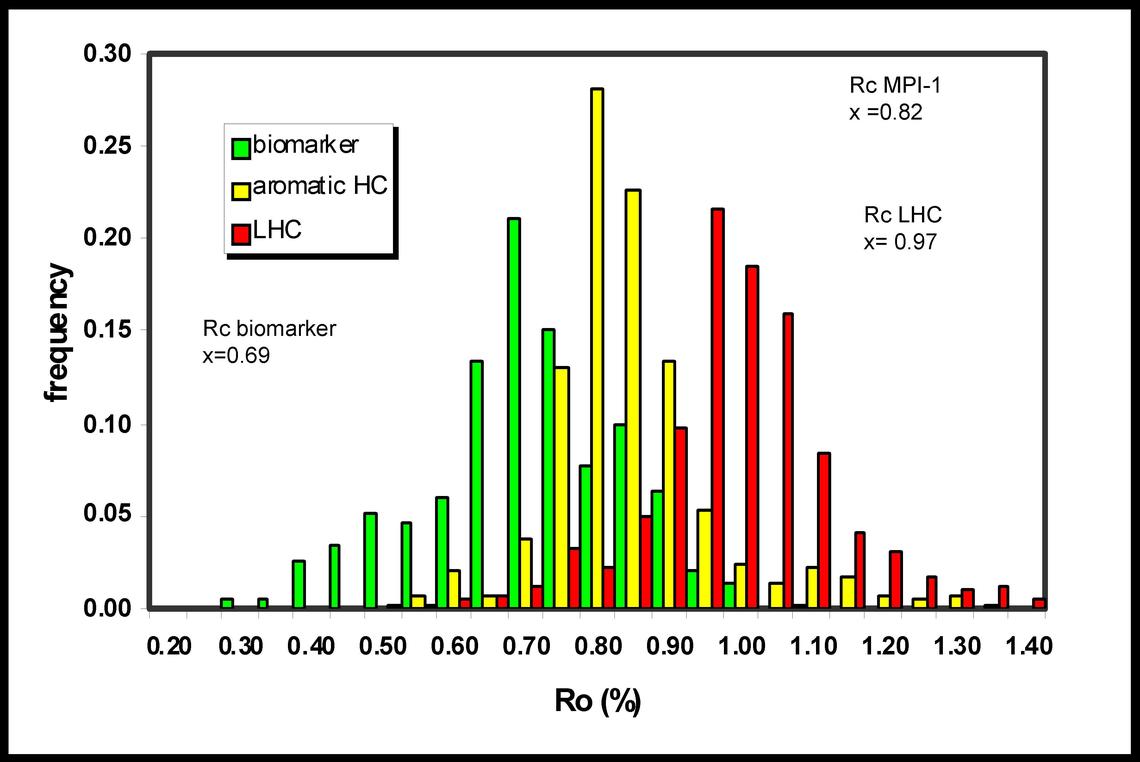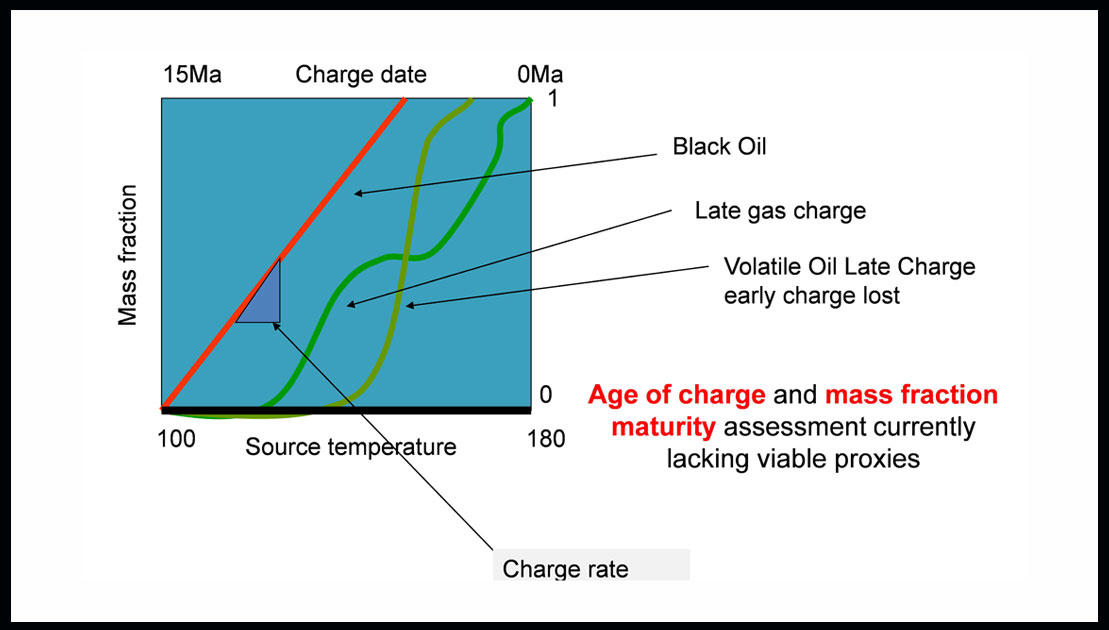Mass Fraction Maturity
Despite the obvious and uncontroversial conclusion that petroleum mixing is common, petroleum geochemists have continued to use relative abundances of, in particular, saturated hydrocarbon and other biomarkers to a large degree in correlations and maturity and facies assessment of reservoired oils and gas/condensates. This is despite evidence that the concentrations of these compounds vary greatly between source rock types and greatly for single facies source rocks of differing maturities (Wilhelms and Larter, 2004). This is particularly seen with biomarkers decreasing in concentration with increasing oil maturity as most biomarkers, including isoprenoid alkanes are generated from kerogens early in the oil window and then diluted by later generated biomarker depleted petroleum . This mixing problem was largely recognized by our group in the late 20th century and is most evident in the high aspect ratio (deep and narrow) Cathaysian Rift basins of China and represents a major problem to correct interpretation of source rock assignment and maturity from analysis of reservoired oils.
Because many classical petroleum geochemical tracers of source facies and maturity such as cyclic biomarkers show many orders of magnitude variation in petroleum systems they do not reliably track facies or maturity signals in mixed oil situations. Light hydrocarbon and aromatic hydrocarbon parameters are more reliable in this sense but as mixtures are the norm, the concept of the maturity of an oil needs revising.
So should we stick with steranes and is there hope for hopanes? Yes, but not in the way we have been using them. We have suggested an alternative approach is needed which tracks the maturity/ petroleum mass fraction relationships for a reservoired oil (mass fraction maturity) in a more complex but realistic manner and allows the more effective bracketing of source kitchen maturity (Wilhelms and Larter , 2004; Larter et al, 2012). We would like now to produce definitive calibration charts of compound concentration versus source basin maturity in oils from suites of source rock types that would be suitable for integration with the basin modeling software.

Concentrations of major compound classes in oils

The distribution of fraction specific maturity for the oils and condensates

Mass fraction maturity and charge age in a trap - If this could be assessed it would be a game changing tool!
References
Larter, S.R. and Aplin, A.C. (1995) Reservoir geochemistry: methods, applications and opportunities. London, The Geological Society, p. 5-32.
Jiang, C. and Li, M. (2002) Bakken/Madison petroleum systems in the Canadian Williston Basin. Part 3: geochemical evidence for significant Bakken-derived oils in Madison Group reservoirs. Organic Geochemistry 33, 761-787.
Wilhelms, A., Larter, S. (2004) Shaken but not always stirred. Impact of petroleum charge mixing on reservoir geochemistry. Geological Society, London, Special Publications 237(1), 27-35.
Larter, S.R., Oldenburg, T., Marcano, N., Snowdon, L.R., Adams, J.J., Chanthamontri, K., Stopford, A.S., Huang, H., Song, F., Laflamme, C., Ranger, M. (2012) New routes to solutions of the WCSB oil charge conundrum: ?- ray Photons and Fourier Transform Mass Spectrometry. CSPG Annual Conference, Calgary 2012.
